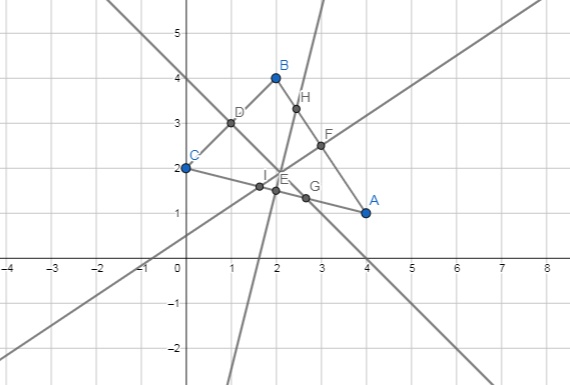A triangle has corners at #(4 , 1 )#, ( 2, 4 )#, and #( 0, 2 )#. What are the endpoints of the triangle's perpendicular bisectors?
1 Answer
The easy endpoints are the midpoints,
Explanation:
By the perpendicular bisectors of a triangle we presumably mean the perpendicular bisector of each side of a triangle. So there are three perpendicular bisectors for every triangle.

Each perpendicular bisector is defined to intersect one side at its midpoint. It will also intersect one of the other sides. We'll presume those two meets are the endpoints.
The midpoints are
This is probably a good place to learn about parametric representations for lines and line segments.
Let's label the points
As
Let's work one out.
The direction vector from C to B is
(Different line, different parameter.) We can see where this meets each of the sides.
Subtracting,
That's outside the range so the perpendicular bisector of BC doesn't hit the side AB.
Subtracting,
That gives the other endpoint as
This is getting long, so I'll leave the other two endpoints to you.

